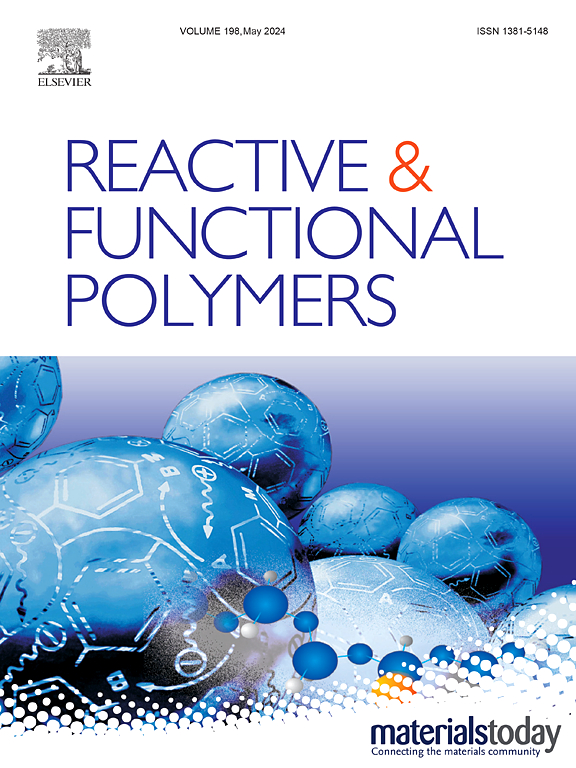刚性官能团对固井降滤失剂耐温性能的影响机理
IF 5.1
3区 工程技术
Q1 CHEMISTRY, APPLIED
引用次数: 0
摘要
为了解决目前我们对高温水泥浆环境中降滤失剂降解机理的认识空白,揭示具有高刚性官能团的单体在提高聚合物链高温稳定性方面的作用,我们分别用具有高刚性官能团的单体合成了几种耐高温降滤失剂,包括苯乙烯磺酸钠(SSS)和n -乙烯基吡罗烷酮(NVP)。高温控滤失性能实验表明,引入刚性官能团可以有效提高降滤失添加剂的耐温性,同时在较低用量下仍能保持良好的脱水性能。高温控滤失性能实验和时效实验表明,引入刚性官能团有效提高了滤失剂的耐温性能。通过zeta电位、颗粒大小和高分辨率显微镜分析,研究了高温下引入刚性官能团对降滤失剂与水泥颗粒相互作用的影响。此外,对降滤失剂在220℃老化后进行了TGA、IR、1H NMR和GPC测试,考察了刚性基团对降滤失剂的影响,其分子量保留率可从48.03%提高到62.21%以上。结果表明,高温水泥浆环境中的支链和主链严重破坏了聚合物的完整性,最终导致功能失效。同时,与NVP相比,SSS依赖于苯环的耐温性,使其具有更高的耐温性,保留了更多的磺酸基。这将有助于提高高温下失水剂的性能,并为开发耐高温水泥浆体系提供战略设计原则。本文章由计算机程序翻译,如有差异,请以英文原文为准。

Mechanism of rigid functional groups on the temperature resistance of fluid loss additives for well cementing
To tackle the existing gap in our understanding of the degradation mechanisms of fluid loss additives in high-temperature cement slurry environments and reveal the role of monomers with highly rigid functional groups in improving the stability of polymer chains at high temperature, we synthesized several high-temperature resistant fluid loss additives using monomers with highly rigid functional groups, including sodium styrene sulfonate (SSS) and N-vinyl pyrrolidone (NVP), separately. High-temperature fluid loss control property experiments demonstrated that the introduction of rigid functional groups effectively enhances the temperature resistance of fluid loss additives, while also maintaining favorable dehydration performance at lower dosages. High-temperature fluid loss control property experiments and aging experiments demonstrated that the introduction of rigid functional groups effectively enhances the temperature resistance of fluid loss additives. At 220 °C, the fluid loss decreases to below 64 % of the initial level The effects of introducing rigid functional groups on the interaction between fluid loss additives and cement particles at elevated temperatures were investigated through zeta potential, particle size, and high-resolution microscopy analysis. Additionally, TGA, IR, 1H NMR, and GPC tests were conducted on the fluid loss additives after aging at 220 °C to examine the impact of rigid groups,while the molecular weight retention rate can increase from 48.03 % to over 62.21 %. The results indicate that branched chain and main chain in high-temperature cement slurry environments critically undermines polymer integrity, ultimately leading to functional failure. At same time, compared with NVP, SSS relies on the temperature resistance of the benzene ring, which enables it to have higher temperature resistance and retain more sulfonic acid groups. This will help improve the performance of water loss agents at high temperatures and provide strategic design principles for the development of high-temperature resistant cement slurry systems.
求助全文
通过发布文献求助,成功后即可免费获取论文全文。
去求助
来源期刊

Reactive & Functional Polymers
工程技术-高分子科学
CiteScore
8.90
自引率
5.90%
发文量
259
审稿时长
27 days
期刊介绍:
Reactive & Functional Polymers provides a forum to disseminate original ideas, concepts and developments in the science and technology of polymers with functional groups, which impart specific chemical reactivity or physical, chemical, structural, biological, and pharmacological functionality. The scope covers organic polymers, acting for instance as reagents, catalysts, templates, ion-exchangers, selective sorbents, chelating or antimicrobial agents, drug carriers, sensors, membranes, and hydrogels. This also includes reactive cross-linkable prepolymers and high-performance thermosetting polymers, natural or degradable polymers, conducting polymers, and porous polymers.
Original research articles must contain thorough molecular and material characterization data on synthesis of the above polymers in combination with their applications. Applications include but are not limited to catalysis, water or effluent treatment, separations and recovery, electronics and information storage, energy conversion, encapsulation, or adhesion.
 求助内容:
求助内容: 应助结果提醒方式:
应助结果提醒方式:


